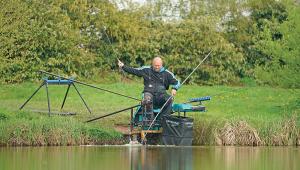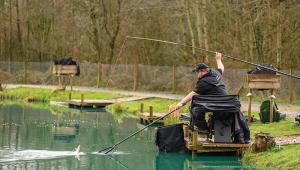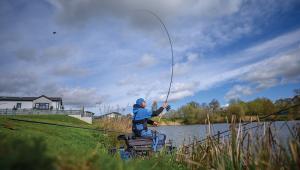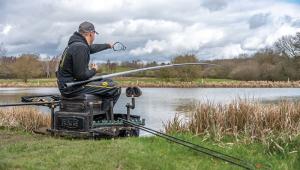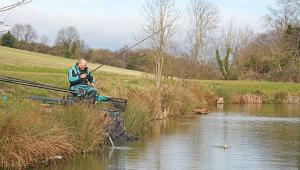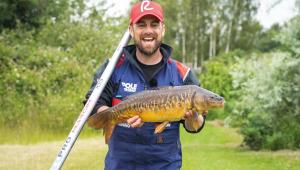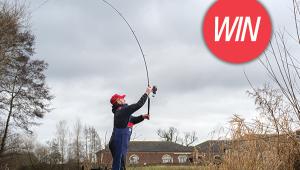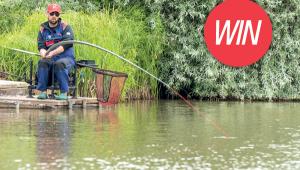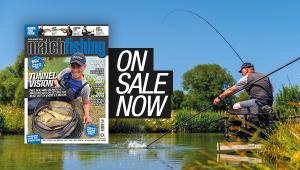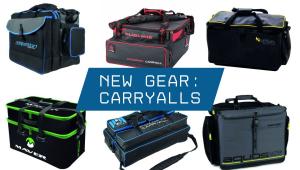Wild Venue, Wild Conditions - Nick Speed
Tackling wild, open waters can be very challenging, especially during the winter months, as there are so many elements that can make or break your match plan.
These range from the water being very cold and clear, to the fish taking longer to home in on your feed, and above all else the ever-changing conditions that can affect your approach and therefore your end result.
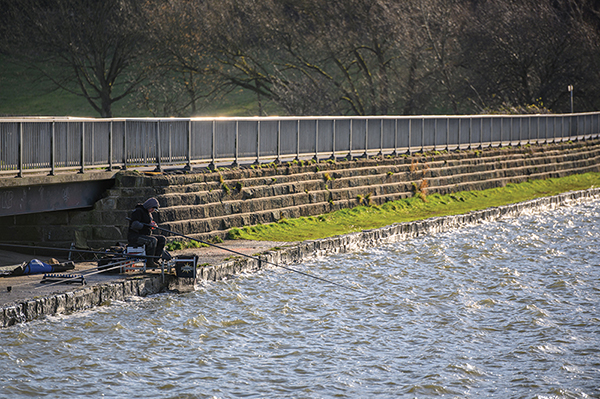
Up and down the country there are many prolific natural venues that purely depend on the right conditions during the cold winter months to reap the rewards from these challenging waters. And, without doubt, choosing the correct approach to suit the conditions is paramount to get the best out of your peg.
To demonstrate my thoughts on this subject, I met up with Dave Wesson at the beautiful Worsbrough Reservoir just on the outskirts of Barnsley, South Yorkshire – a venue I’ve had the pleasure to spend many hours on throughout my angling life.
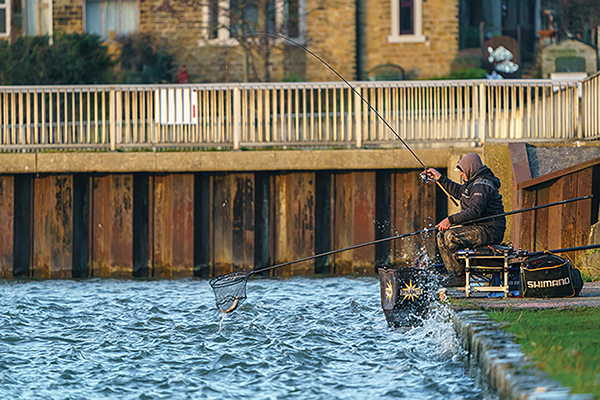
Low And Clear
As prolific as this venue is, choosing the correct location on the reservoir during the winter months, when the water clarity is at its highest and the water temp is very low, is imperative to increase the chance of a good day’s sport or to give you a chance of framing in match conditions.
Today I’ve chosen to fish the dam head pegs, in particular Peg 35, as this specific area is one of the deepest parts of the lake, which suits what I’m trying to demonstrate, which is catching a few silvers in deep water, and hopefully on the pole.
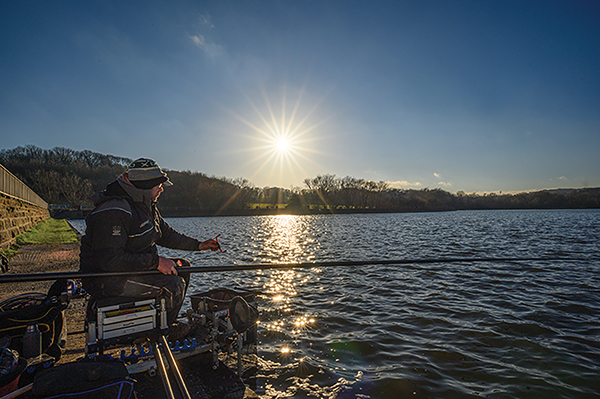
The plan for the day is to hopefully catch on the pole, but as we’ve all experienced on these open wild waters, the weather always dictates the approach for the day but more importantly the moment at hand.
Although at the moment the conditions are great for presenting a float in deepish water, a sudden burst of wind can completely ruin bait presentation, so a feeder approach has to be considered.
This particular area of the lake plumbs up very evenly on the pole line and at 10 metres the depth is around 11 feet, and moving further out to 11, 12 and 13 metres the depth remains exactly the same. Once you find the bottom of the dam wall the bottom is like a snooker table.
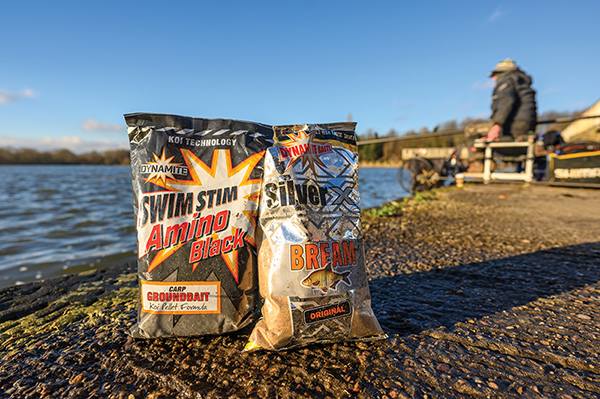
My plan is to initially feed four balls of groundbait, which is an equal mixture of Dynamite Black Swim Stim, Silver X Bream and Frenzied Hemp Match Black, mixed in equal quantities at least two hours before I arrive at the venue, because I want to create an inert mix.
For the mixed species I’m after today, which is anything from bream, roach, hybrids and perch, this particular mix is a formula I’ve used for many years, so I’ve got complete confidence in it, especially during the winter months.
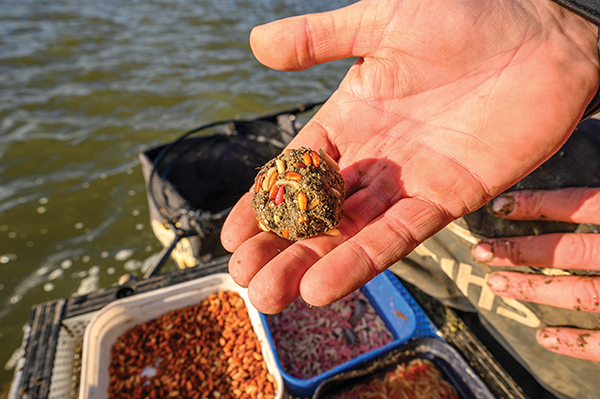
This toned-down fishmeal mix works brilliantly on all natural waters and commercial venues too. By incorporating Silver X Bream, which is a cereal-based mix, it creates less potency in my groundbait, which is ideal when the water is cold.
However, during the warmer months I would just feed Black Swim Stim on its own as I want to create a richer mix with more scent, especially when the water has more colour and when the fish rely as much on scent as they do vision.
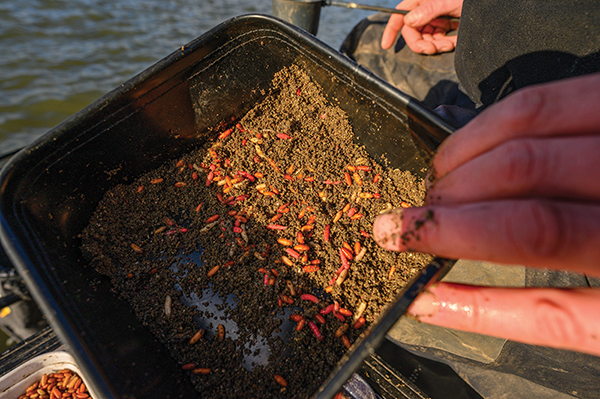
In the mix, I’ve added a small amount of chopped worm, which has been chopped to a mush, together with a small amount of casters and maggots.
By feeding this amount, my approach isn’t about feeding and waiting for the fish to settle on the mix, it’s more about creating a base and then relying on loose feed to draw fish into the zone.
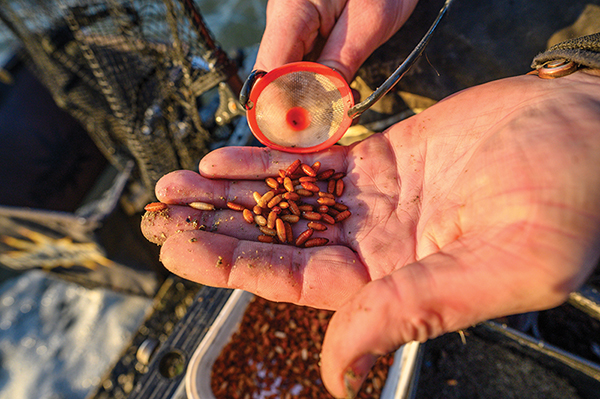
What’s imperative to remember though, is the fish will be entering the zone at possibly half depth, so loose feeding is essential for helping the fish to locate the base trap.
Rigs
My rigs for today are 1.5g and 2.0g Sensas hollow floats, tied to 0.15mm Aero Slick Silk line to an 8in hooklength of 0.86mm, which is tied to a size 18 Guru Karanku hook.
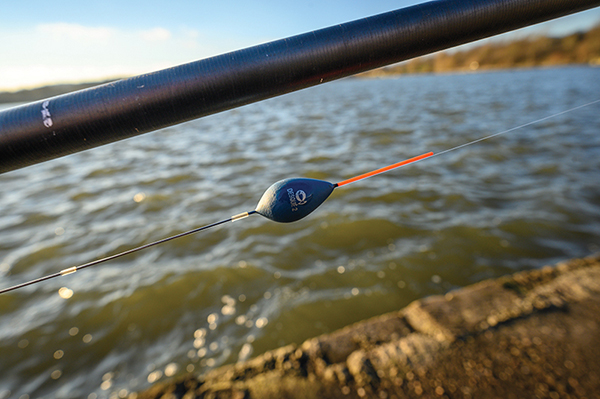
I’ve plumbed up so I’m laying two inches overdepth for the moment, but if the wind picks up (or drops), I may have to adjust this accordingly.
But to start with I always want to fish either dead depth if the wind allows, or lay just a small amount of line on the deck as this helps speed up the process of receiving bites and allows me to read faster what species are present in the swim.
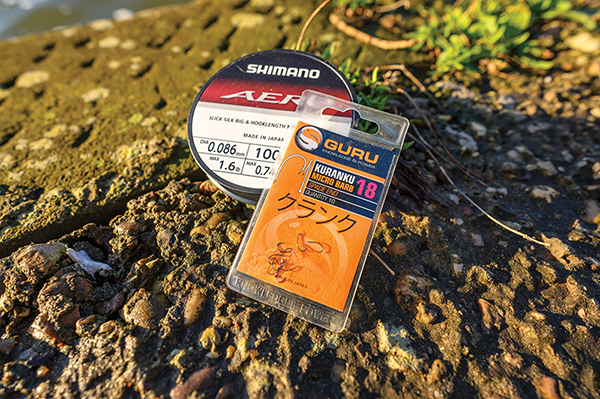
I can then adjust the depth accordingly to suit the species and how they are feeding at that time in the day. For open water venues, and especially deep windswept ones, presentation is the be-all and end-all, making float choice so important.
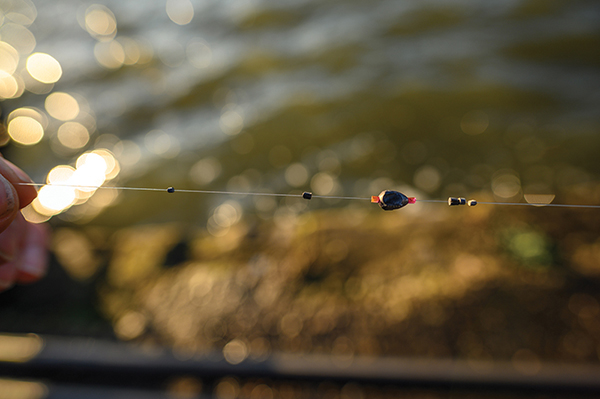
This particular float pattern I’m using is perfect for cutting through the skim and creating maximum bait stability, but also the shape of the body gives you something to hold on to without the float riding out of the water.
For both rigs I’m using an olivette with No9s as droppers and for these kinds of conditions, I’m a massive fan of 8in hooklengths as this blends perfectly with the depth of the rig and the dropper spacings, but also allows you to lay extra line on the deck without adjusting the dropper placement.
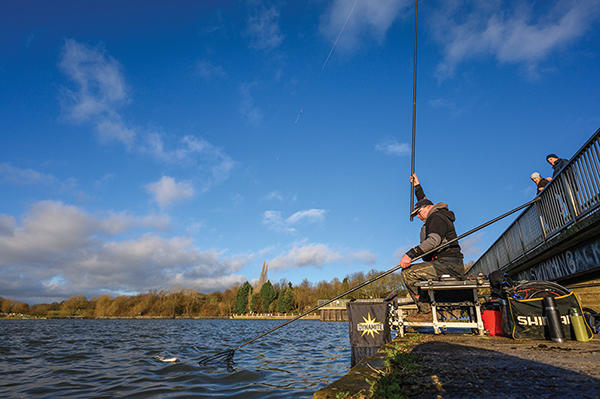
The most important thing to remember is the lack of bait that these venues often see during the colder months, so waiting for a response, especially on the pole, may take a few hours.
You need to be very patient because as is often the case in winter, those last couple of hours as the light begins to fade could be your only window of opportunity.
In The Zone
After feeding the initial bait, I then started loose feeding 20 or so casters very occasionally to hopefully draw some fish into the zone. This also allowed me to fish over the groundbaited area and beyond the base to see if the fish were more settled on the loose offerings beyond the groundbait, as opposed to settling right over the groundbait.
In my experience, especially at Worsbrough, a loose-fed area is often loads better than the main trap.
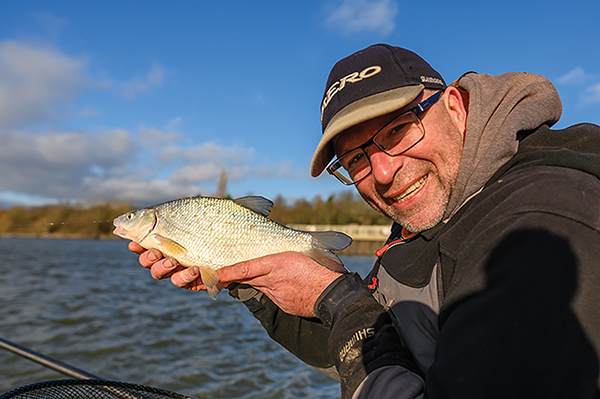
Two hours into the session I was still waiting for my first bite on both the feeder and the pole, which I know will arrive sooner or later on either line.
This is where another line is imperative, especially in match conditions, as wherever possible I would give myself at least a couple of approaches to focus on and then rotate between them.
This is especially important when targeting silver fish because doing this gives each rested/quiet line the opportunity of an arrival of fish to settle and gain confidence over the bait.
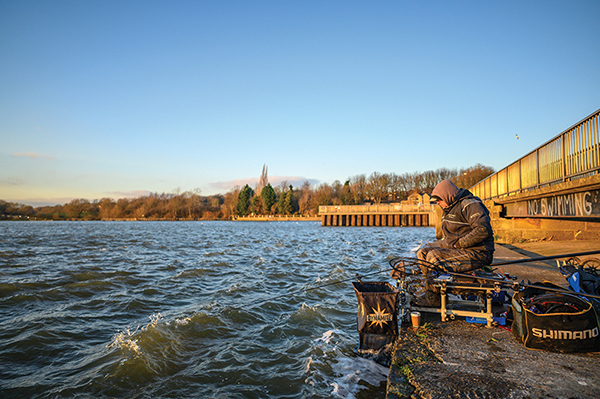
My resting line is the feeder and although I’m trying to catch on the pole, fishing the feeder further out may speed up the process of fish settling over my pole line. Or, better still, both lines.
For this setup I’m using the 11ft Aero X7, which is a brilliant rod, especially for silver-fish work with braid. For this style of feeder fishing, where I’m only planning on fishing a 20m line, I like to use a very thin braid because on at short range the thin diameter cuts through the water very quickly.
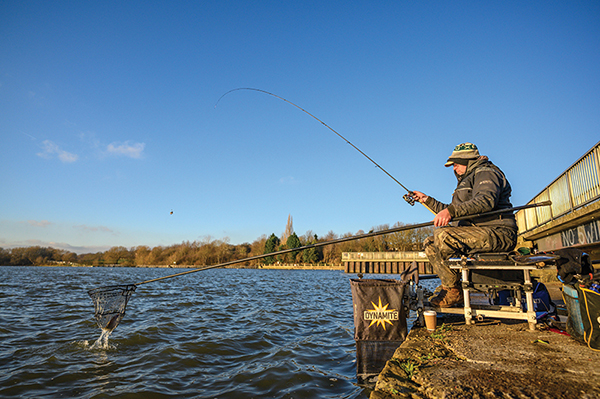
This makes the whole process of tightening up to the feeder extremely quick and efficient. For this setup I’m using Kairiki braid in 0.06mm, which I can confidently say is the best braid I’ve ever used and even in this thin diameter is extremely strong.
This is coupled with half a rod length of 8lb Technium shocker. At the business end I’m using a very short homemade boom connected to 0.11mm Aero Fluorocarbon and a size 16 Feeder Special hook.
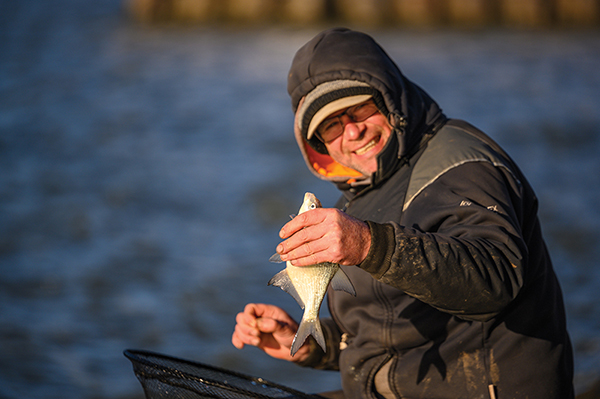
After two and half hours of fishing, I finally received my first bite of the day on the 20m line, which was a small but very welcome skimmer on a single maggot. I was then feeling a whole lot more confident, knowing that things were going to happen as I felt there were then fish in the peg.
However, what was noticeable was that the westerly wind, which was blowing smack into my face, was beginning to pick up, which wasn’t good news, especially for the pole, as this would seriously hinder bait presentation. Because of this I decided to see if there was an arrival on the pole line before it picked up anymore.

Wind Of Change
First drop in and I was rewarded with an instant bite and a superb looking hybrid around the 1lb mark, then on my next drop in, again on single maggot, I managed a good stamp roach. But then the wind picked up and from one minute thinking I was in for a brilliant day’s fishing, I literally couldn’t get a bite as my bait presentation was so poor!
The waves had begun to hit the dam wall and were rebounding back, creating a swell effect that made any sort of presentation on the pole nigh on impossible.
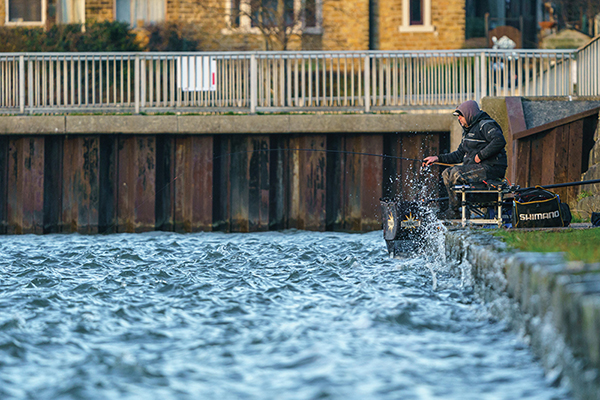
Swapping up float size can help, but the problem with swell waves is that the water movement grabs hold of the whole float and moves it up and down regardless of the weight of the float.
This results in terrible bait presentation and no bites from fish that demand perfect presentation. This is where a feeder plays a big part, especially on reasonably deep pole venues such as Worsbrough, where adverse water movement can often render the pole approach useless.
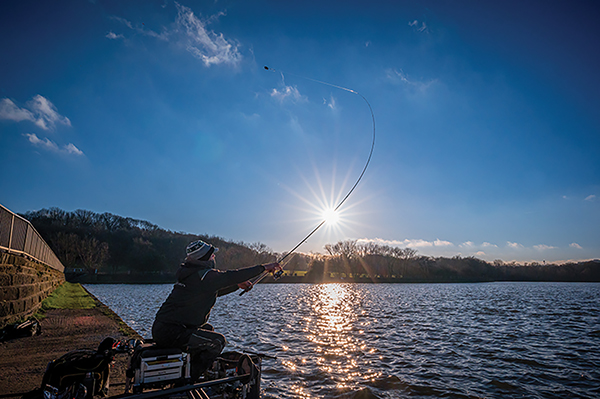
So, a short underarm cast on the pole line with a small Nisa feeder coupled with a single maggot produced an instant bite, again off a lovely hybrid. In a way it just goes to show how important being open-minded is on these wild, open waters, where presentation is at the forefront of understanding what fish are present in the swim.
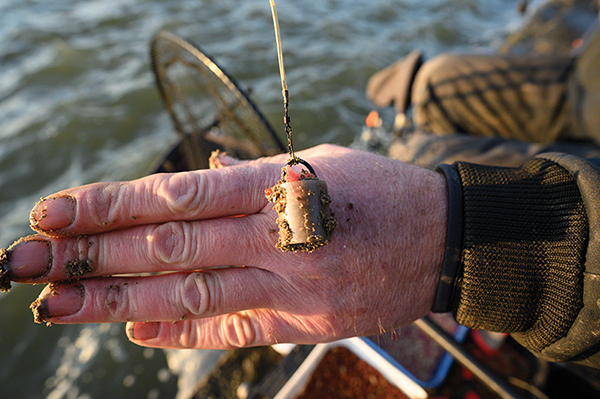
Prior to making this decision of trying the feeder over the pole line, I was sat there adjusting depth and trying heavier rigs all to no avail, when it came down to simple answer of poor bait presentation.
Although the wind never dropped for the rest of the session, what was noticeable was the fish were feeding very frugally, and the only way to catch on the feeder was to present a single maggot and, as bizarre as it sounds, I never had a bite on a double maggot!
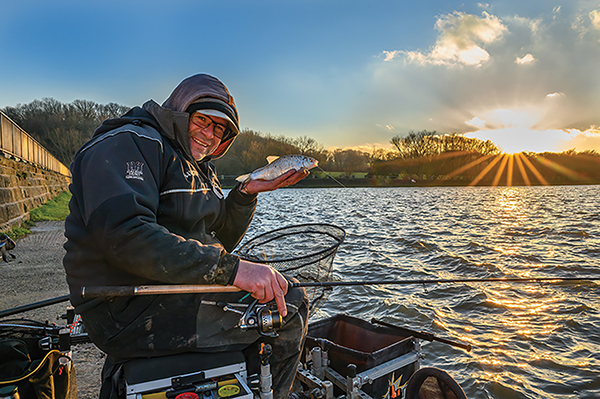
Without doubt the session was a little bit testing as I knew that the conditions had completely ruined the opportunity of a brilliant day’s fishing on the pole. However, as we always do from nearly every day on the bank, it was interesting to learn how important it was to be open-minded and adapt to the conditions, as opposed to how you as an angler want to catch the fish.
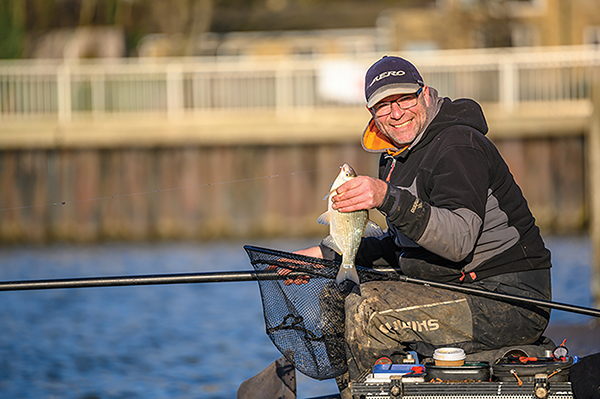
I ended the windswept session with a hard-earned and small but rewarding net of silvers, not many bites but a good quality stamp, and a great winter day’s fishing really.
What was interesting to note was that the following day I fished the same peg in flat calm and sunny conditions that allowed me to fish the pole and feed and present the bait with accuracy.
This resulted in over 40lb of quality roach, bream and hybrids and even on this perfectly still day, getting my presentation bang on was the difference between catching and not.
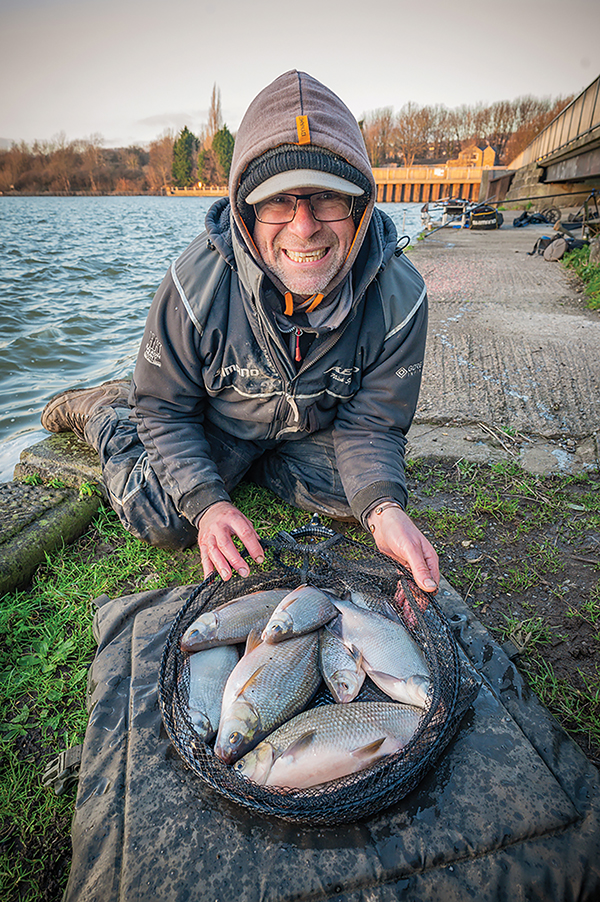
- Log in or register to post comments

